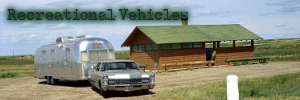















Winnebago |
|---|

|
| Topic Navigation |
|---|
|
Official Site: WinnebagoInd.com
Wikipedia: Winnebago Industries Page Sections History Article Index |
History
The following section is an excerpt from Wikipedia's Winnebago Industries page on 6 October 2019, text available via the Creative Commons Attribution-ShareAlike 3.0 Unported License.
Winnebago Industries, Inc. is an American manufacturer of motor homes, a type of recreational vehicle (RV), in the United States. It is based in Forest City, Iowa. On June 4, 2018, the company expanded into motorboat manufacturing with the acquisition of Chris-Craft.
The company was founded by Forest City businessman John K. Hanson in February 1958. At the time, the town, located in Winnebago County, Iowa, was undergoing an economic downturn, so Hanson and a group of community leaders convinced a California firm, Modernistic Industries, to open a travel trailer factory in a bid to revive the local economy.[3]
Surviving a rough beginning, the entire operation was purchased by five Midwesterners, with Hanson serving as president. In 1960, the name of the company was changed to Winnebago Industries. To improve quality, Winnebago Industries manufactured furniture and other components designed specifically for its travel trailers. One such innovation was the "Thermo-Panel", a strong, lightweight sidewall that was a characteristic of Winnebago products.
In 1966, the first motor home rolled off the Winnebago Industries assembly lines.[4] These motor homes were sold at a price approximately half of what was being charged for competitors' models, which led to its ubiquity and popularity in the RV community. The brand name has become synonymous with "motor home" and is commonly used as a generic trademark for such vehicles, whether they were produced by the company or not.[5]
Through the 1970s and into the 1980s, model names were influenced by the Native American tribe of the same name and included the Brave, the Indian, the Chieftain, and the Warrior. Older Winnebago RVs are often recognizable by the painted "w" (also called the "flying W") on the side of the vehicle, with a stripe that connects the front and back of the camper.
In 1973, the company introduced a new model, the Minnie Winnie, built on the Dodge B-series van chassis. It was about 19-1/2 feet (5.9 m) long (despite the name, longer than the shortest contemporary Brave model). Longer models were added through the years. This model continues (using Chevrolet or Ford chassis after 1980) to this day. As fuel prices went up over time, the company made smaller models available, such as the "Winnie Wagon", with a low profile and pop-top.
The company also developed a line of smaller units slightly larger than a passenger van, built using various bodies and powerplants from two European automobile and truck manufacturers. The LeSharo was based on the Renault Trafic van with a 2.2 L 4-cylinder motor, and the "Rialta" had a Volkswagen Transporter (T4) (a.k.a. "EuroVan") cab, the 2.5-liter 5-cylinder motor, 2.8-liter VR6 with 140 BHP or 2.8 V6 engine with 201 BHP. Distinct from the "Rialta", Volkswagen contracted to have the camper conversions of the T4 be done by Winnebago Industries, a radical departure from using the Germany-based Westfalia company that had become famous for building the VW Type 2 campmobile models from the 1950s through 1991. This tradition continues today with Winnebago's use of the Mercedes-Benz Sprinter and Fiat Ducato chassis.
In December 2010, Winnebago Industries entered a new chapter when the company purchased SunnyBrook RV, re-entering the towable manufacturing market for the first time since 1983.
In March 2015, Winnebago announced that it was opening a production center to employ 70 in Waverly, Iowa, due to labor shortage issues in the Forest City area.[6] The company now employs about 2,400 workers in Forest City, 200 in Charles City and 60 in Lake Mills, plus additional employees in Middlebury, Indiana.
